Alexandra Pirici’s action performance in Berlin is playfully abstract with a desire to address urgent political questions
Artist and choreographer Alexandra Pirici transforms the historic hall of Berlin’s Hamburger Bahnhof into a live action performance and site-specific installation
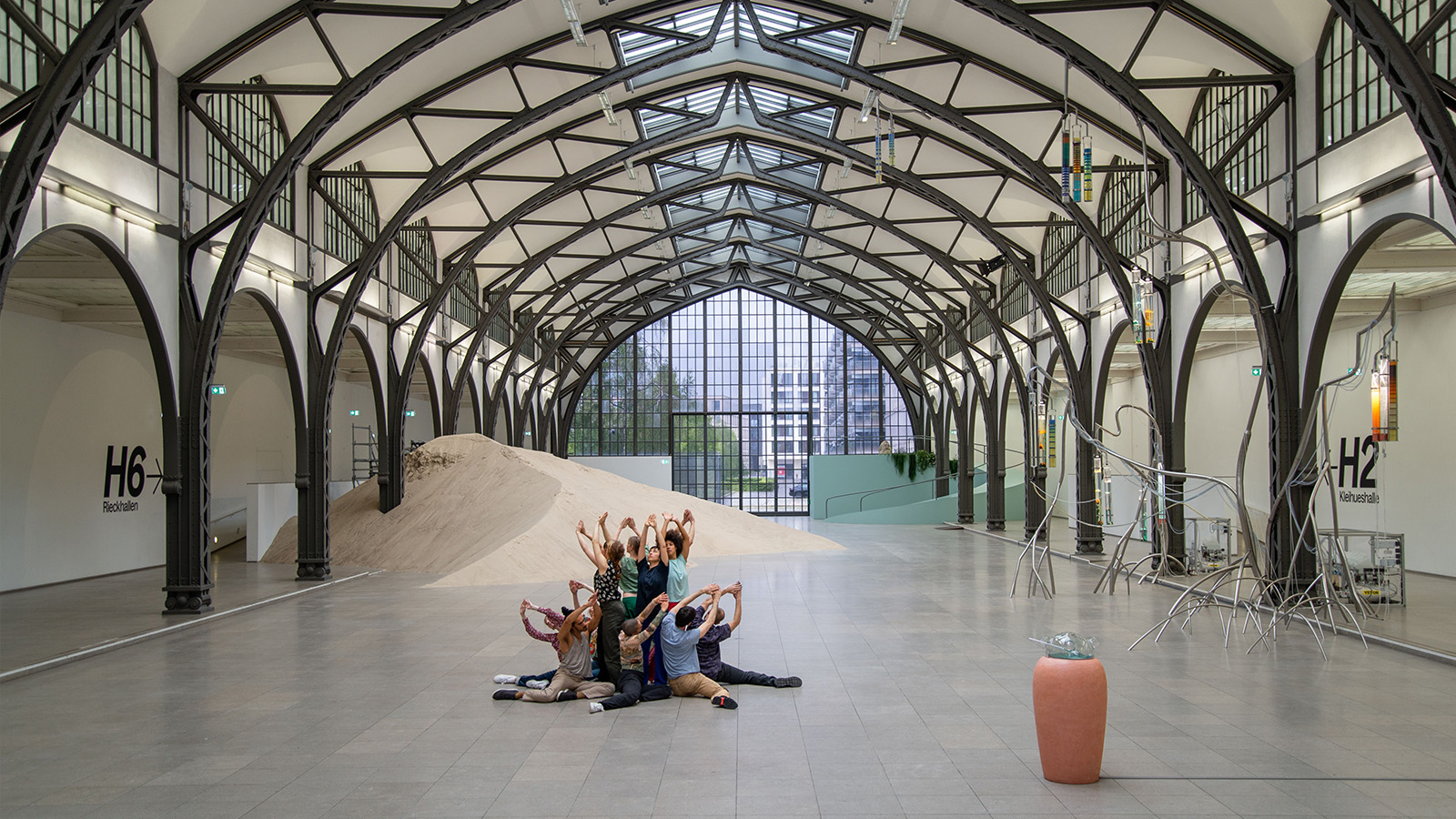
A dozen casually dressed performers animate Hamburger Bahnhof’s central hall, leading visitors around the curious topography as they stage a series of live tableaus or vignettes – regularly punctuated by polyphonic singing and semi-poetic speech. An imposing sand dune has been implanted into the space, and a few of them stand atop it, grasping at handfuls as if in search of something. Their actions are not frantic, but precise and methodical. One of them suddenly abandons the excavation project and begins to slowly roll down the side of the dune. Reaching the bottom and continuing to roll across the floor, they are eventually picked up by two others, carried ceremoniously up a winding ramp and set atop a raised platform next to a prominently displayed agate stone. The person and the large stone appear on the same level, and a kind of duet between them begins, enhanced by the sound of another performer humming a short Bach excerpt.
Alexandra Pirici’s ‘Attune’ at Hamburger Bahnhof, Berlin

This is just one small part of Alexandra Pirici’s Attune, the artist and choreographer’s largest work to date, co-commissioned by Hamburger Bahnhof and Audemars Piguet Contemporary, which supported the project from its inception. In the buttressed hall of the former train station, with its impressive windowed-wall as a backdrop, Pirici has created what she describes as an itinerary or parcours that feels like a landscape. Performers will activate the space for four hours each day of the exhibition’s run, with a choreography that loops three times over. Most elements of the action are fixed, but some remain fluid and subject to the performers’ improvisation and consonance with one another.

However playful or abstract Pirici’s choreographies may appear, they are often grounded in extensive research and a desire to address urgent political questions. For her, rigour and playfulness are not rigidly distinct artistic methods: the success of Attune lies in the solidarity it creates between storytelling and scientific inquiry.
Pirici explains that she ‘intended Attune to be a celebration of the continuum between the animate and the inanimate... I believe that continuum should be celebrated because it literally situates us within the larger fabric of the world, made of the same matter, belonging to the same universe.'
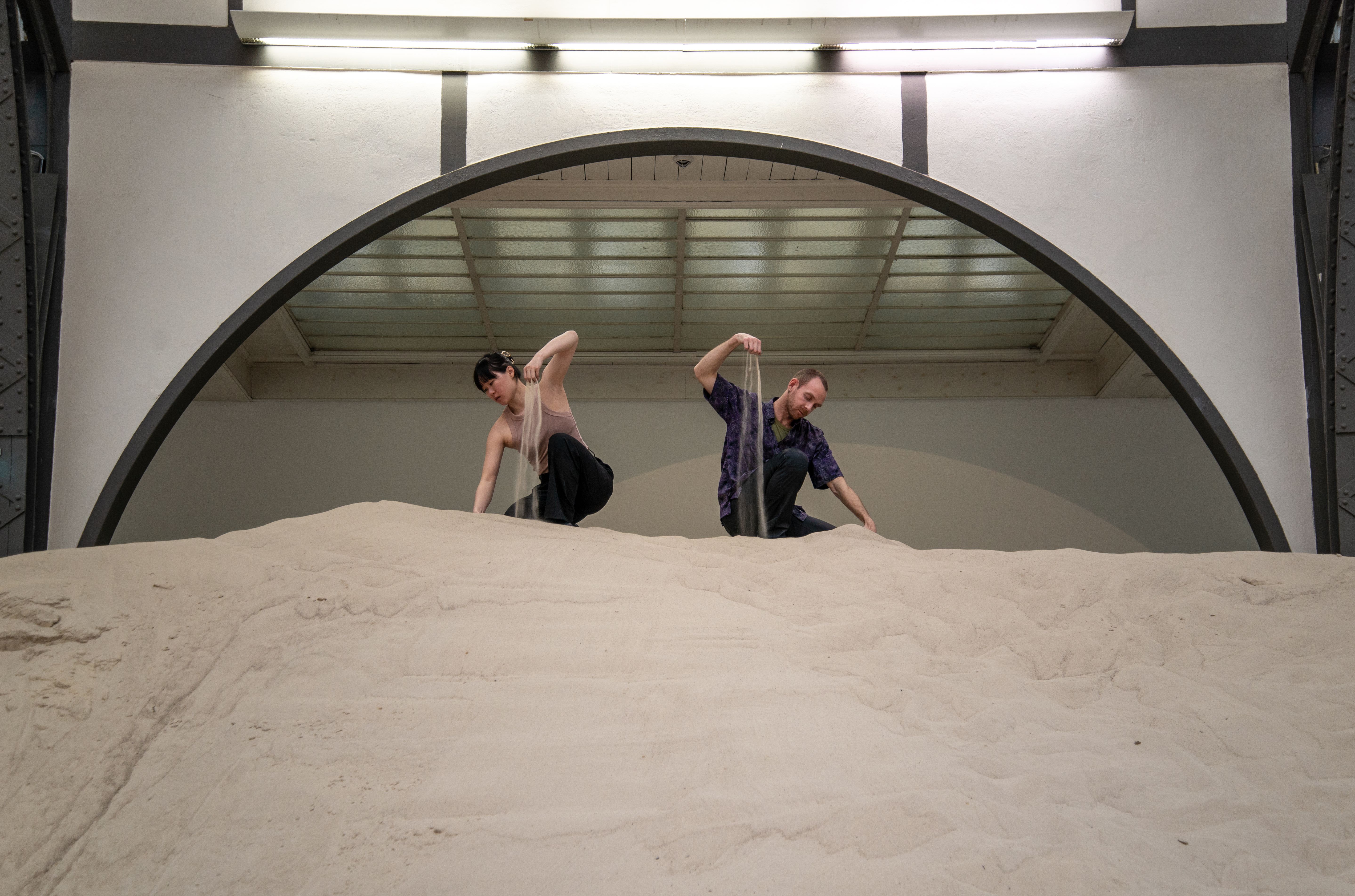
Attune stresses the importance of listening to different voices, both human and non-human. The polyphonic chorus, inspired by Georgian or Corsican folk songs, fills the vast space and draws visitors into a meditation on the necessity of acknowledging our place in a multi-perspectival world. Polyphony, Pirici notes, is challenging for the modern ear, which is so focused on the individual voice – it takes a considered level of engagement to both perform and distinguish the multiplicity of voices.
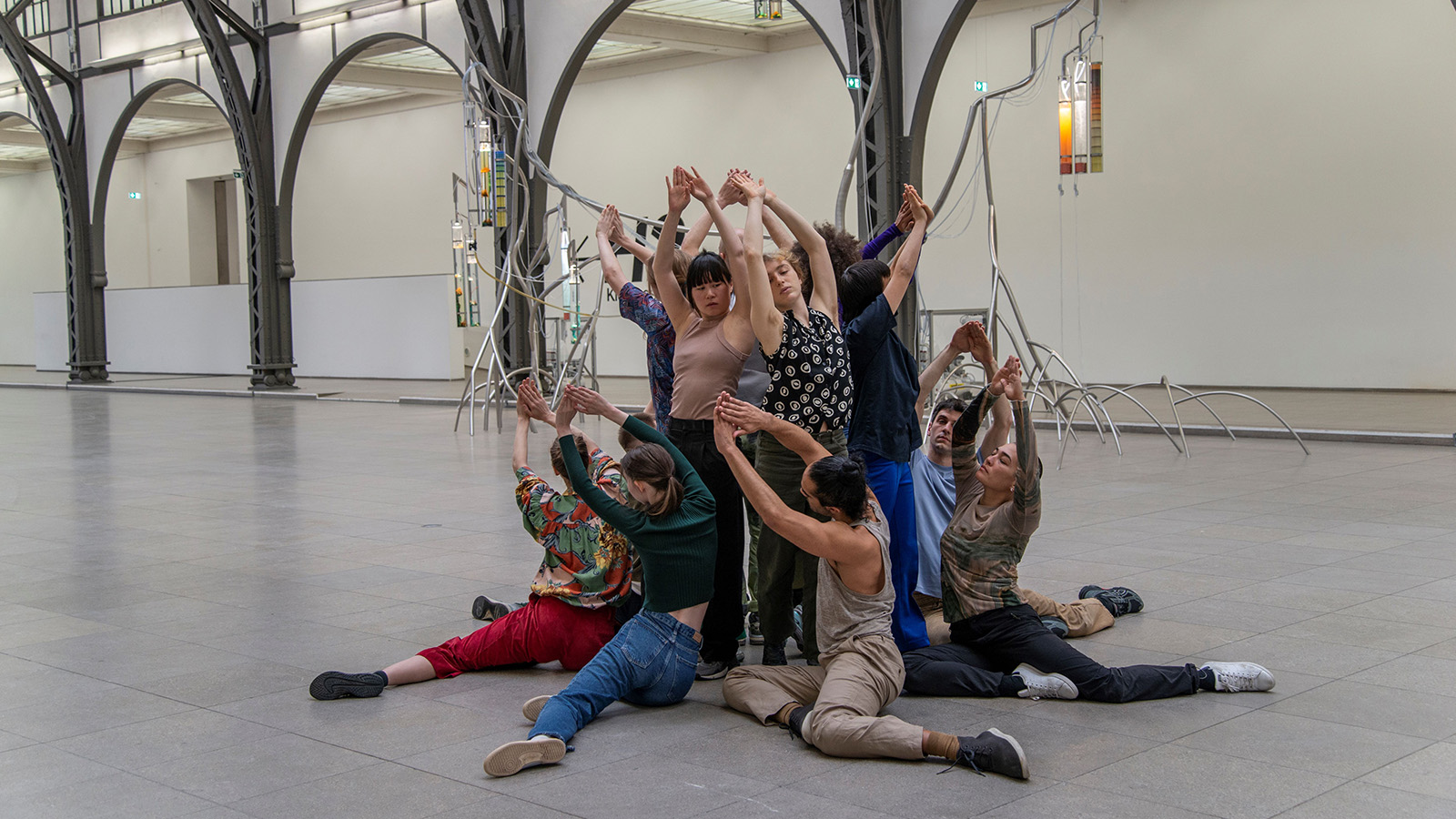
The sound of the performers singing also occasionally intervenes directly in the chemical processes taking place on the stainless-steel installation mounted in the space, which Pirici has dubbed the 'Organ'. Referencing its part in a larger system, or organism, as well as its resemblance to the musical instrument, this vegetal-like structure has glass cylinders hanging from its branches, which contain different experiments. As the performers sing their 'Organ songs', the colour and composition of the substances changes, adding another layer to the interspecies collaboration at work in the piece.
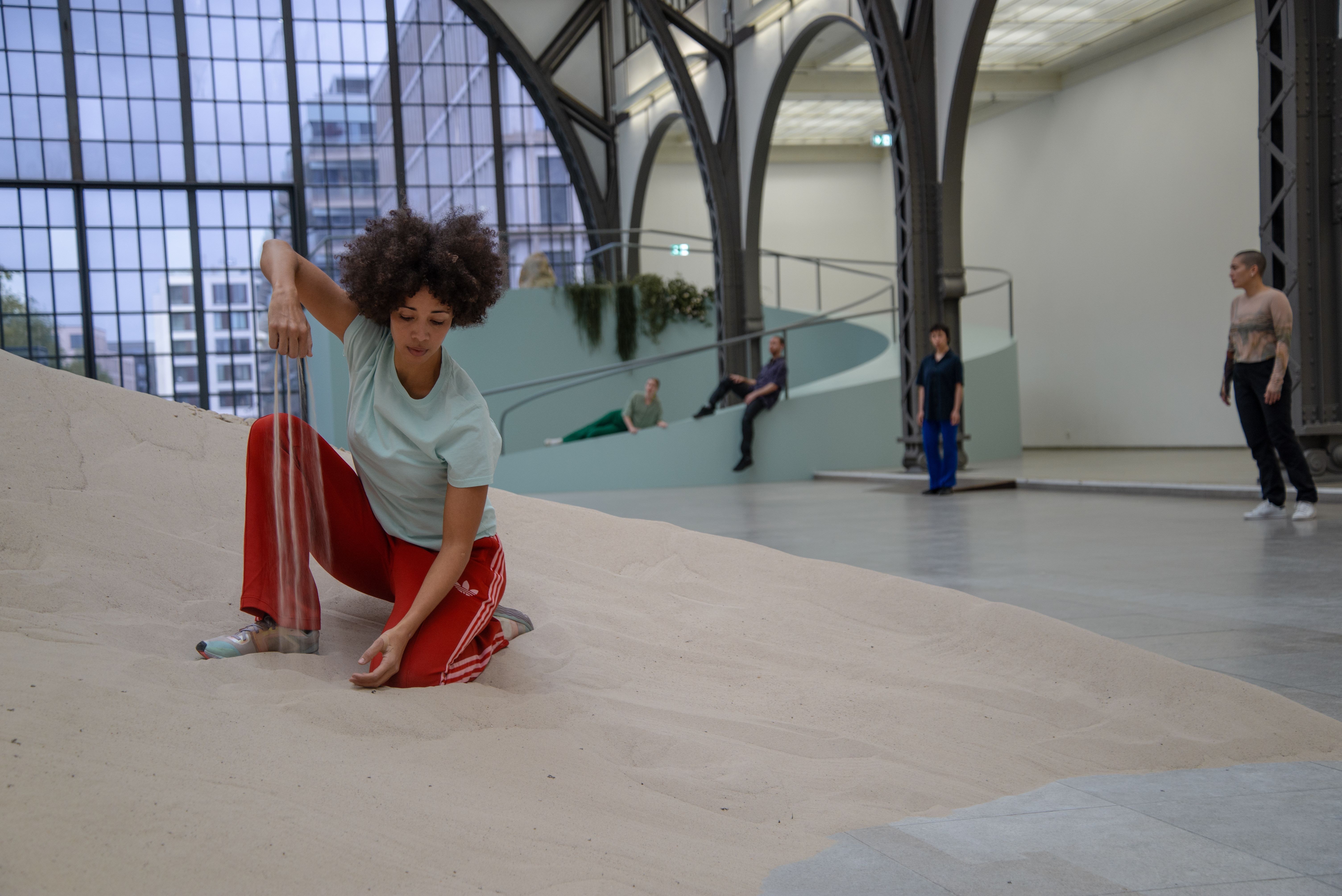
Placing human bodies in direct dialogue, or chorus, with organic and inorganic matter, Attune draws our attention to the self-organising impulses that exist, not just in human communities but also, and importantly, among seemingly inert materials. By paying attention to the capacity of our surrounding environment to be both active and creative, we can gain a renewed sense of our own propensity for cooperation. Attune, Pirici insists, presents us with an 'invitation to harmonise'.
Wallpaper* Newsletter
Receive our daily digest of inspiration, escapism and design stories from around the world direct to your inbox.
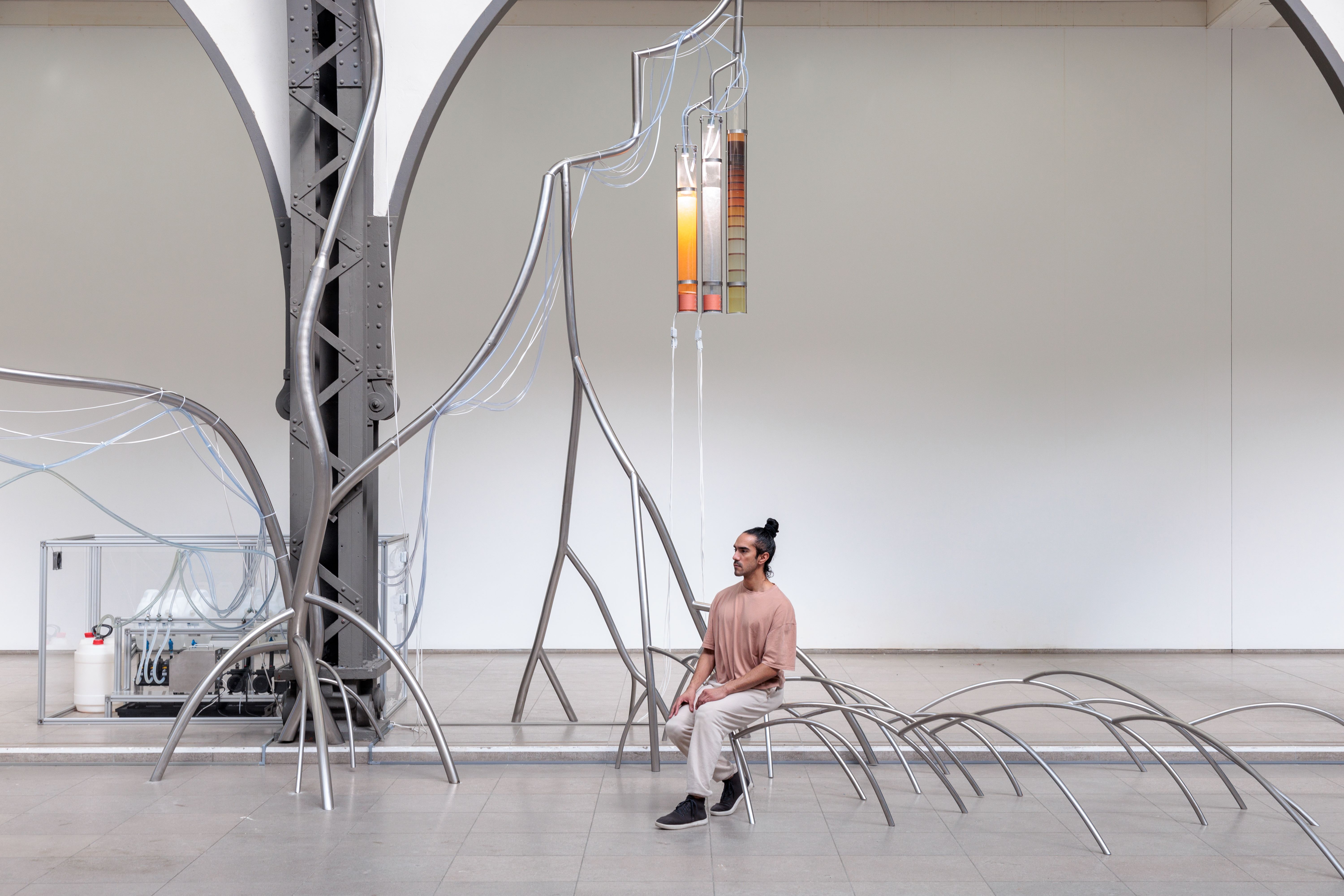
Attune, Hamburger Bahnhof, Berlin, until 6 October 2024, smb.museum
-
 Put these emerging artists on your radar
Put these emerging artists on your radarThis crop of six new talents is poised to shake up the art world. Get to know them now
By Tianna Williams
-
 Dining at Pyrá feels like a Mediterranean kiss on both cheeks
Dining at Pyrá feels like a Mediterranean kiss on both cheeksDesigned by House of Dré, this Lonsdale Road addition dishes up an enticing fusion of Greek and Spanish cooking
By Sofia de la Cruz
-
 Creased, crumpled: S/S 2025 menswear is about clothes that have ‘lived a life’
Creased, crumpled: S/S 2025 menswear is about clothes that have ‘lived a life’The S/S 2025 menswear collections see designers embrace the creased and the crumpled, conjuring a mood of laidback languor that ran through the season – captured here by photographer Steve Harnacke and stylist Nicola Neri for Wallpaper*
By Jack Moss
-
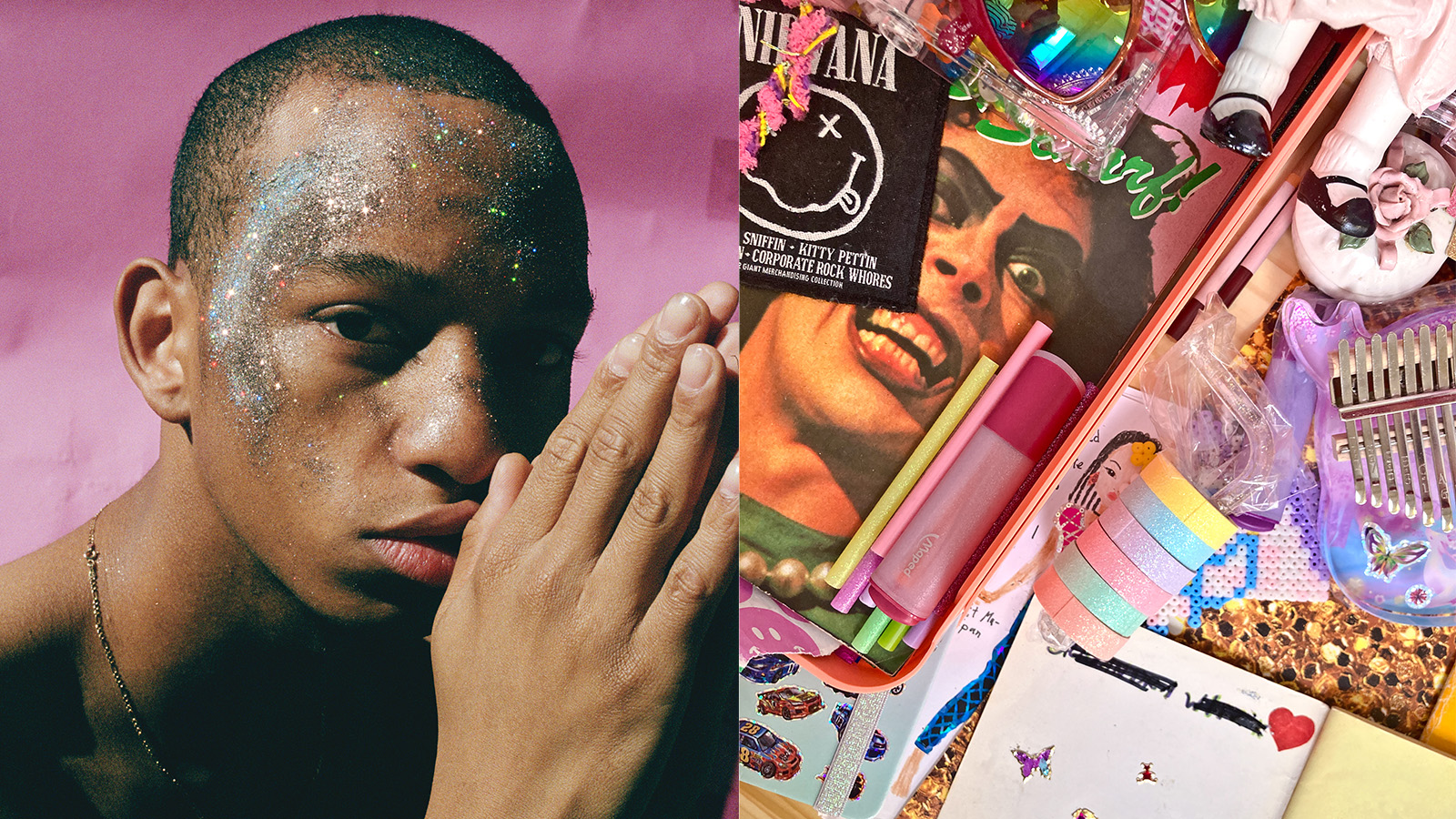 MK&G’s ‘Glitter’ exhibition: a brilliant world-first tribute to sparkle and spectacle
MK&G’s ‘Glitter’ exhibition: a brilliant world-first tribute to sparkle and spectacleMK&G’s latest exhibition is a vibrant flurry of sparkles and glitter with a rippling Y2K undercurrent, proving that 'Glitter is so much more than you think it is'
By Hiba Alobaydi
-
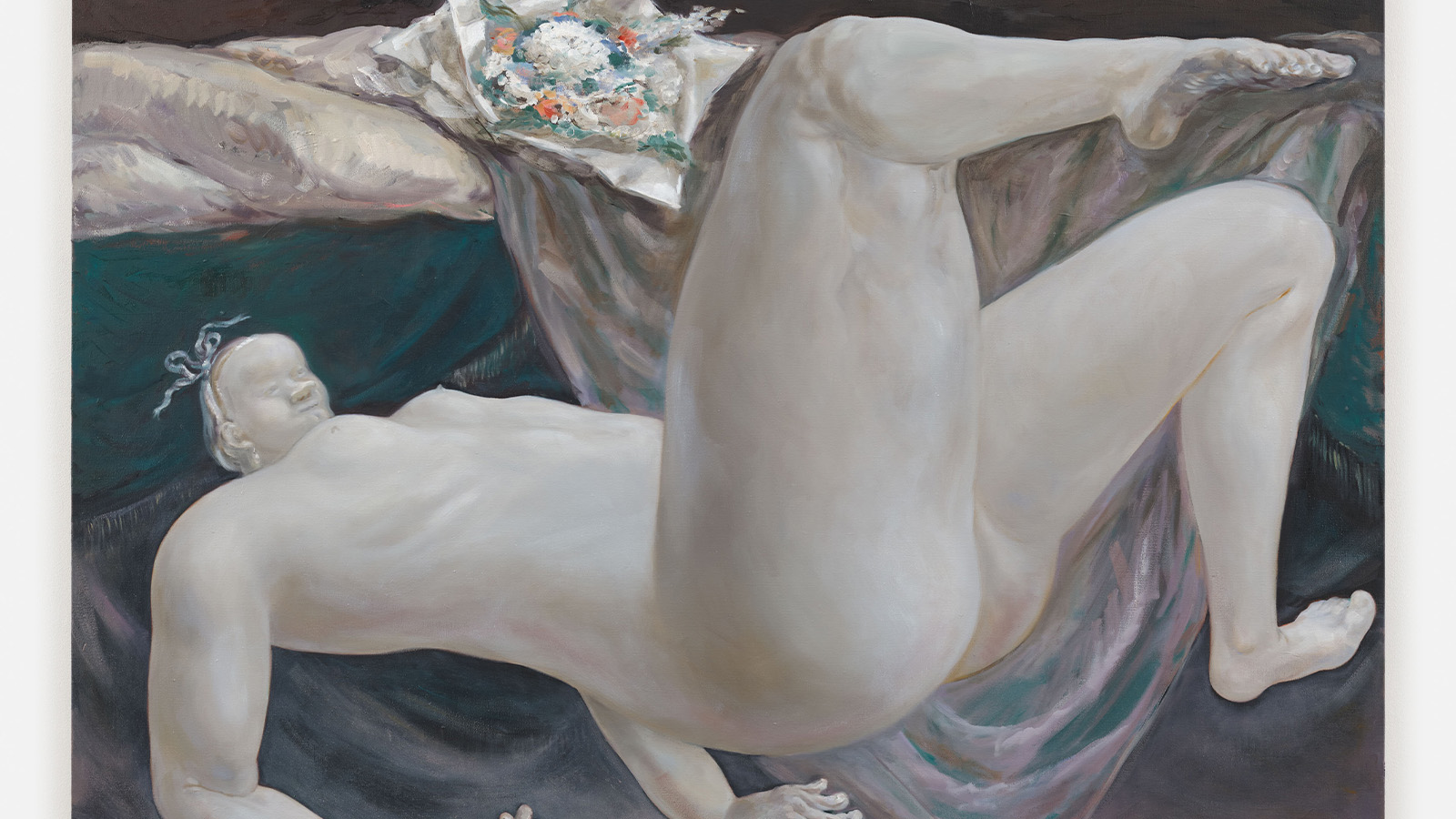 Louise Bonnet’s falling figures depict an emotional narrative to be felt rather than told
Louise Bonnet’s falling figures depict an emotional narrative to be felt rather than toldLouise Bonnet’s solo exhibition 'Reversal of Fortune' at Galerie Max Hetzler in Berlin, nods to historical art references and the fragility of the human condition
By Tianna Williams
-
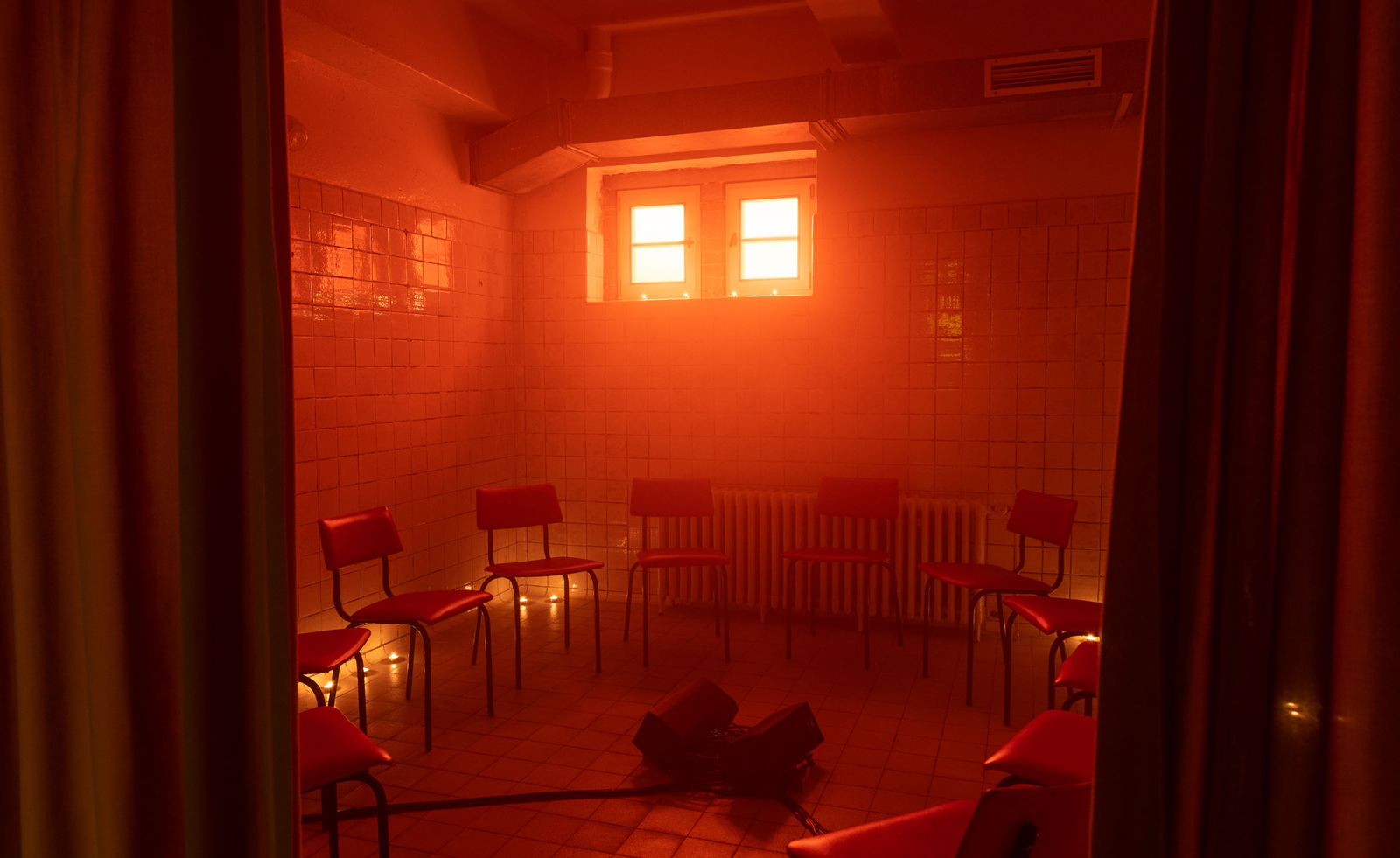 Inside E-WERK Luckenwalde’s ‘Tell Them I Said No’, an art festival at Berlin's former power station
Inside E-WERK Luckenwalde’s ‘Tell Them I Said No’, an art festival at Berlin's former power stationE-WERK Luckenwalde’s two-day art festival was an eclectic mix of performance, workshops, and discussion. Will Jennings reports
By Will Jennings
-
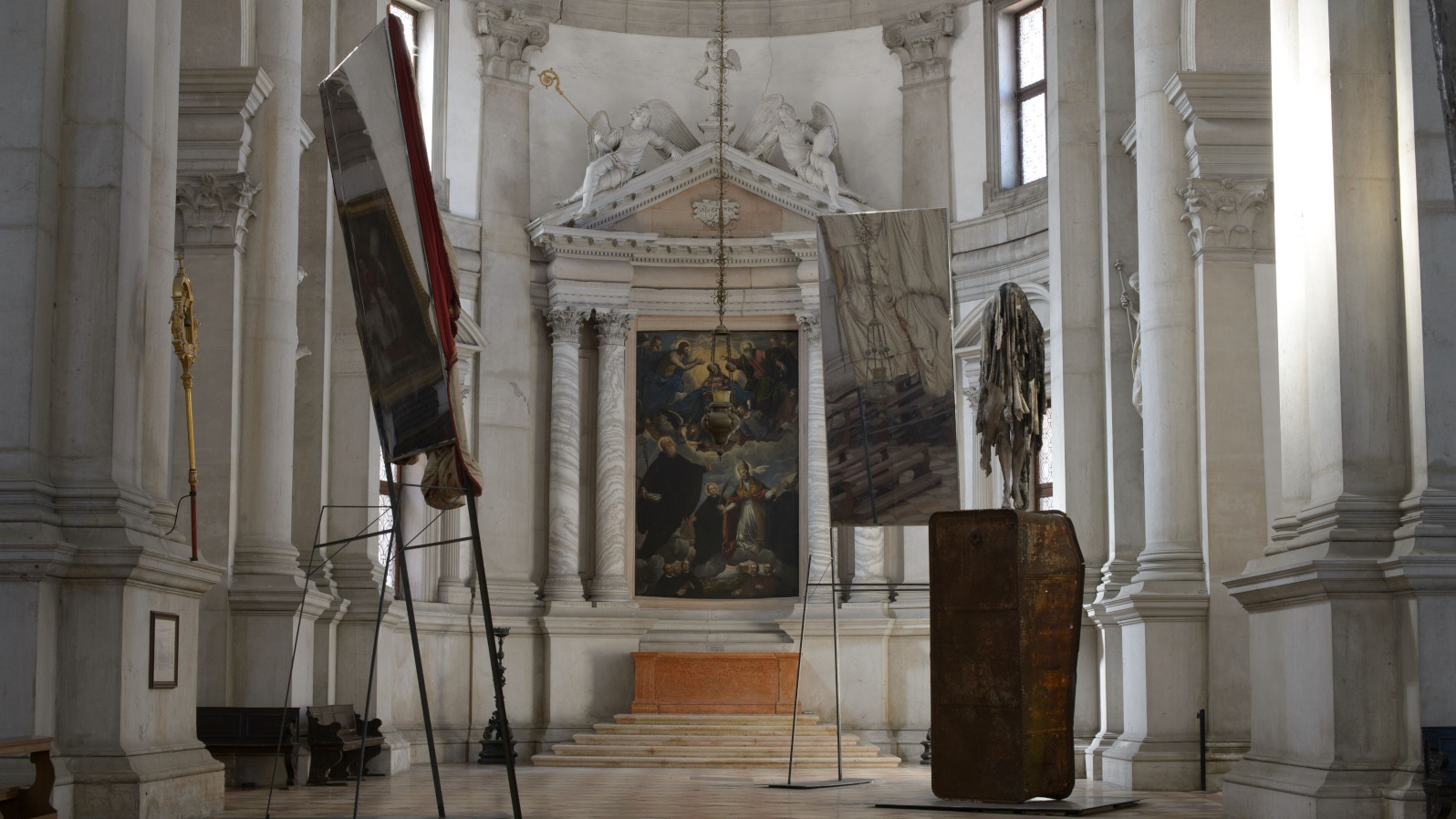 Berlinde De Bruyckere’s angels without faces touch down in Venice church
Berlinde De Bruyckere’s angels without faces touch down in Venice churchBelgian artist Berlinde De Bruyckere’s recent archangel sculptures occupy the 16th-century white marble Abbazia di San Giorgio Maggiore for the Venice Biennale 2024
By Osman Can Yerebakan
-
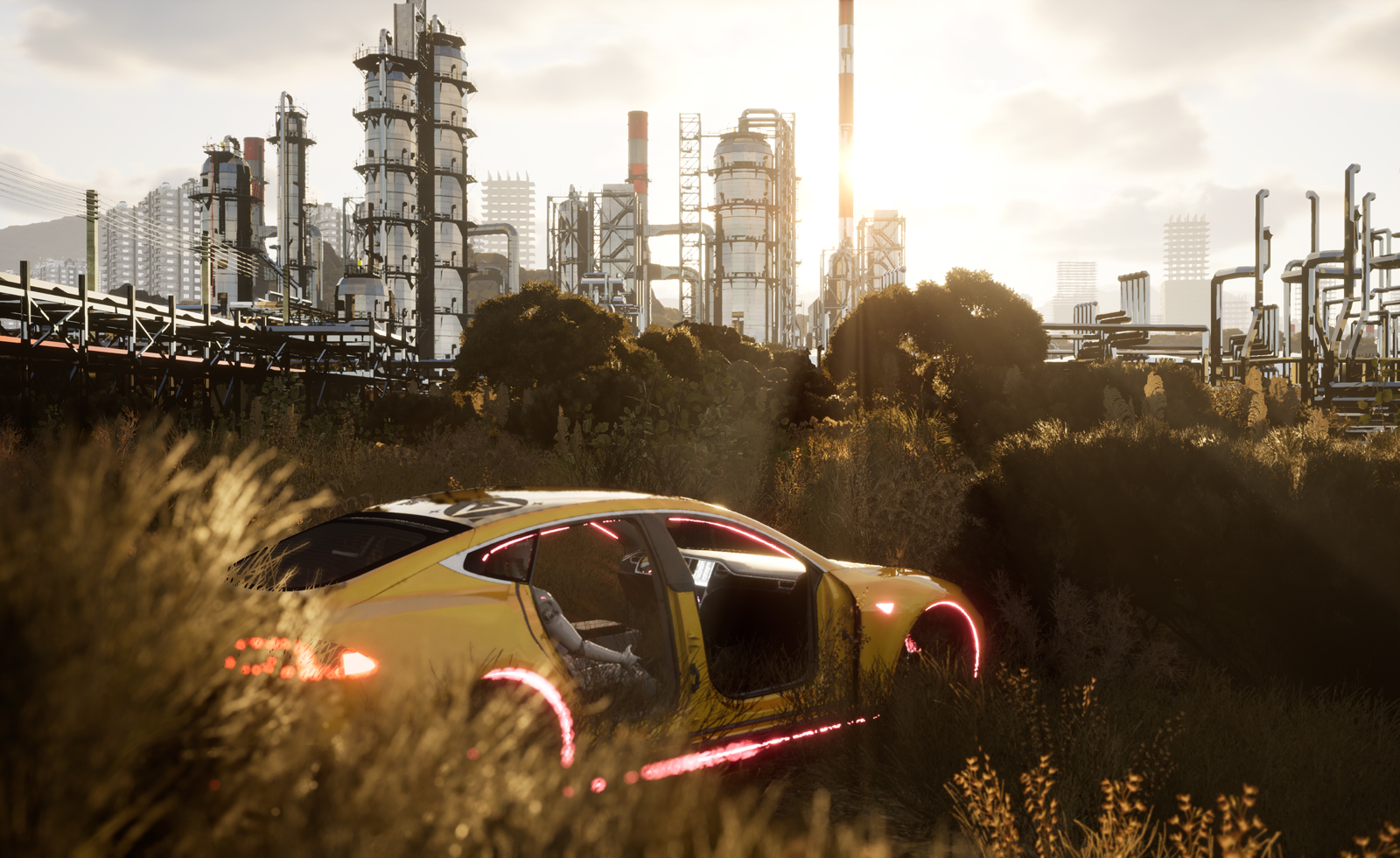 Lawrence Lek’s depressed self-driving cars offer a glimpse of an AI future in Berlin
Lawrence Lek’s depressed self-driving cars offer a glimpse of an AI future in BerlinLawrence Lek’s installation ‘NOX’, created with LAS Art Foundation, takes over Berlin’s abandoned Kranzler Eck shopping centre
By Emily Steer
-
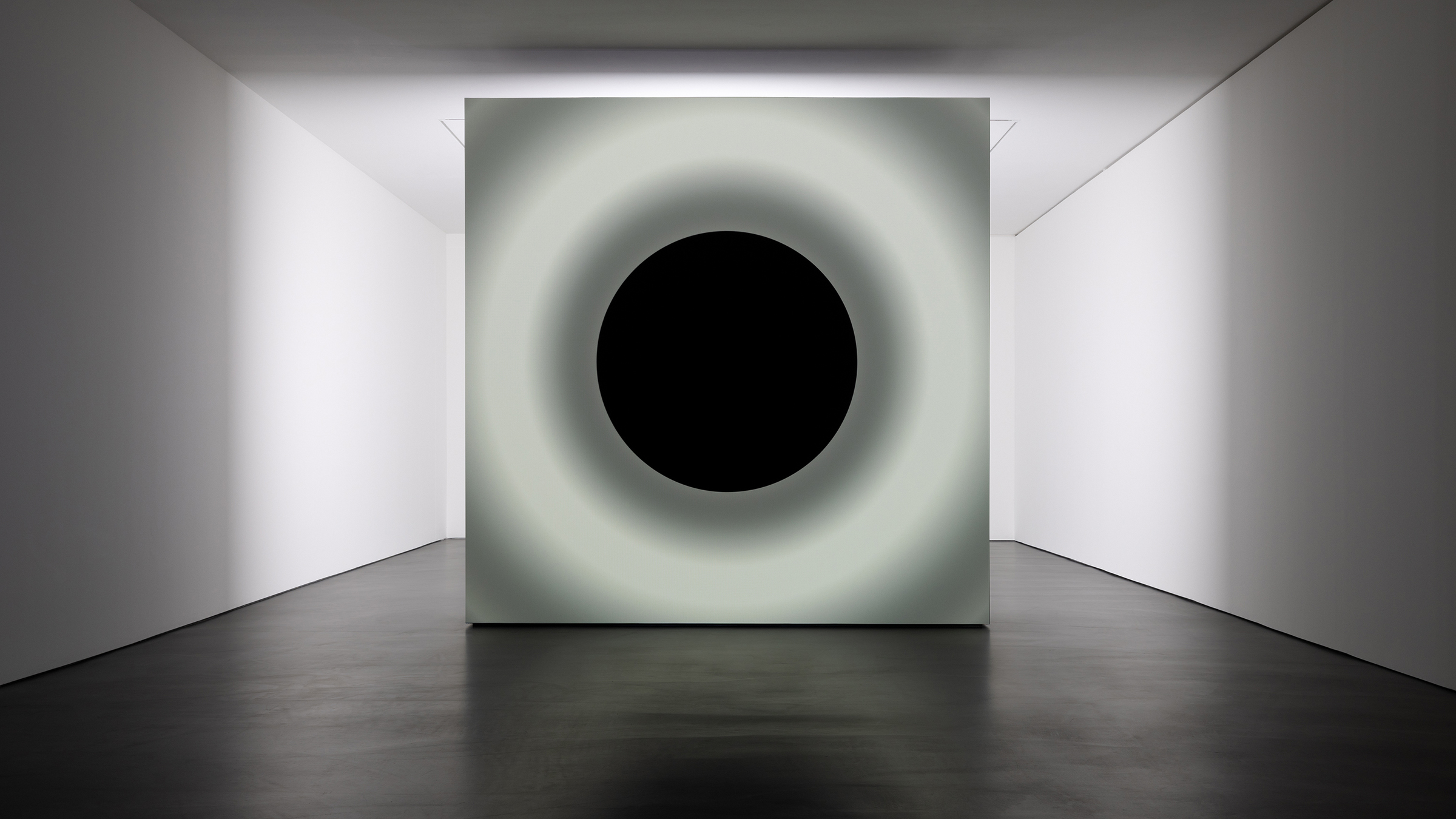 Ryoji Ikeda and Grönlund-Nisunen saturate Berlin gallery in sound, vision and visceral sensation
Ryoji Ikeda and Grönlund-Nisunen saturate Berlin gallery in sound, vision and visceral sensationAt Esther Schipper gallery Berlin, artists Ryoji Ikeda and Grönlund-Nisunen draw on the elemental forces of sound and light in a meditative and disorienting joint exhibition
By Harriet Lloyd-Smith
-
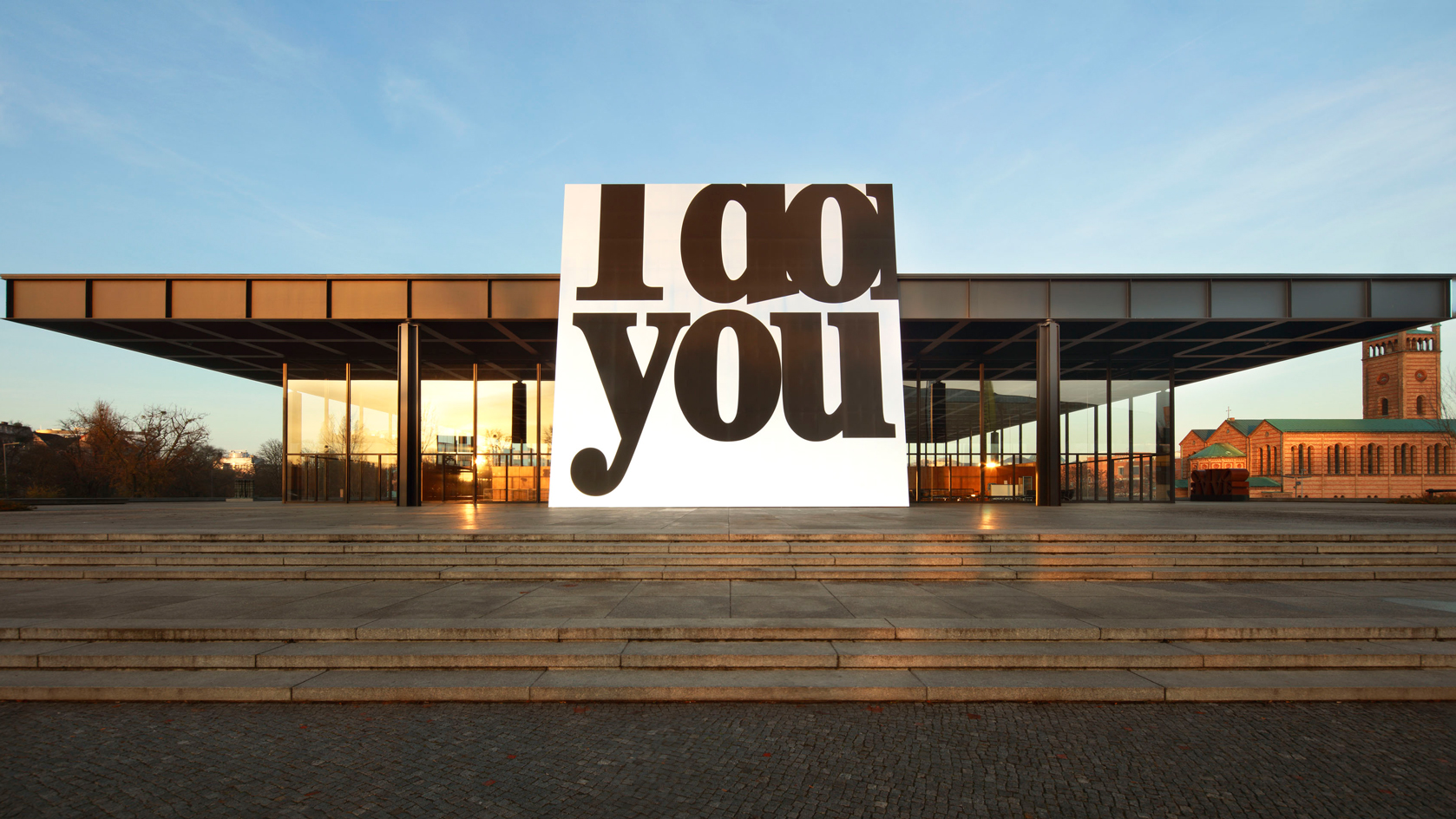 Monica Bonvicini ‘I do You’ review: bondage, mirrors and feminist takes on masculine architecture
Monica Bonvicini ‘I do You’ review: bondage, mirrors and feminist takes on masculine architectureEmily McDermott reviews Monica Bonvicini’s much-anticipated exhibition ‘I do You’ at Berlin’s Neue Nationalgalerie
By Emily McDermott
-
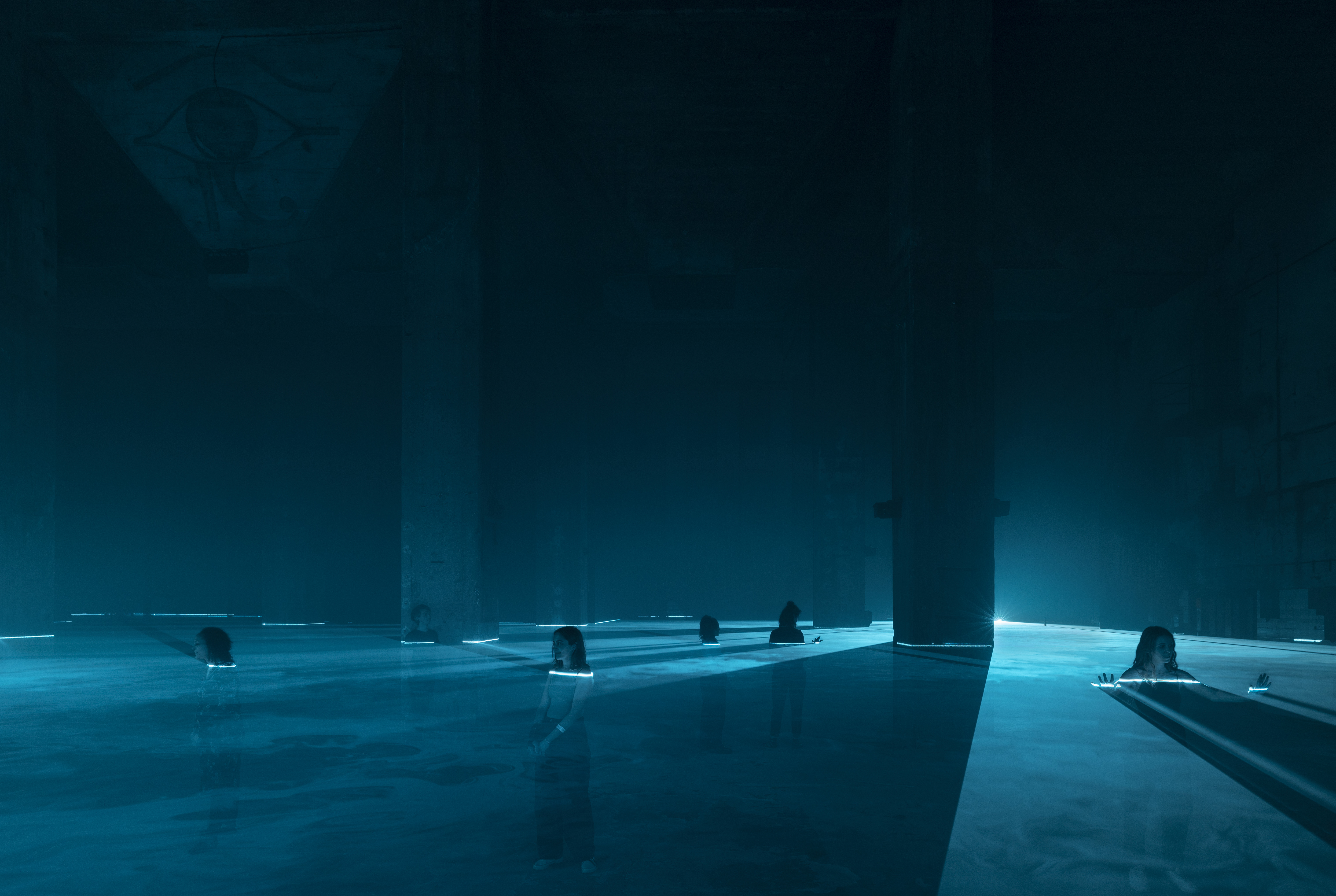 Artist Ian Cheng explores the technological and aesthetic potential of AI
Artist Ian Cheng explores the technological and aesthetic potential of AIIn Berlin’s cavernous Halle am Berghain, New York-based artist Ian Cheng plunges viewers into an immersive world of AI and existential anime in ‘Life After BOB’
By Will Jennings